
| Peacock Jewel or 4 O'Clock Moth (one synonym : Heleona fenestrata Swainson, 1833) GEOMETRINAE, GEOMETRIDAE, GEOMETROIDEA | (donherbisonevans@yahoo.com) and Stella Crossley |
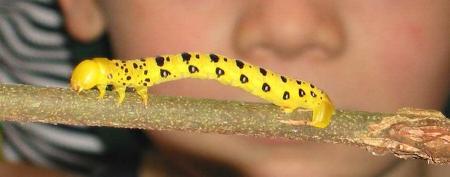
(Photo: courtesy of Justine Coupe, Cairns, Queensland)

| Peacock Jewel or 4 O'Clock Moth (one synonym : Heleona fenestrata Swainson, 1833) GEOMETRINAE, GEOMETRIDAE, GEOMETROIDEA | (donherbisonevans@yahoo.com) and Stella Crossley |

(Photo: courtesy of Justine Coupe, Cairns, Queensland)
These Caterpillars are yellow with pairs of black spots along the back. The caterpillars have been reported to feed on a variety of plants. including:
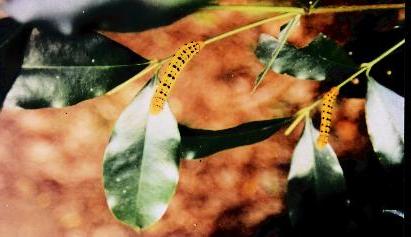
These caterpillars had an extraordinary behaviour observed in October in Kuranda, Queensland. The caterpillars each positioned themselves so that they were hanging on under a stem between penultimate and final leaves on that stem. There were many caterpilars of the same species on the tree, and they looked at first glance to be the catkin flowers of the tree. Only closer inspection revealed that the "flowers" were in fact caterpillars. They had a length of about 6 cms.
Pupation occurs in a folded leaf with no cocoon. The pupae are brown with two black spots at the head.
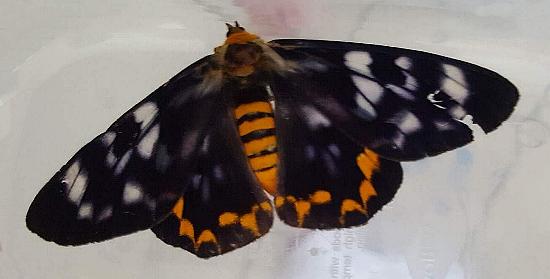
The adult moths are large for the family, reaching a wingspan of up to 8 cms. Whilst being somewhat variable, they are generally dark blue with clear areas in the wings, and an irregular row of orange spots around the outer edge of each hind wing. The body is banded in dark blue and orange. The moths are inclined to fly in the late afternoon, as the common name suggests.
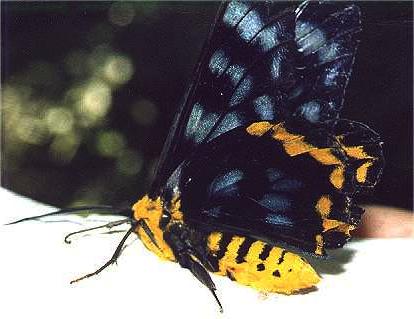
The species has been found on
as well as in Australia in:
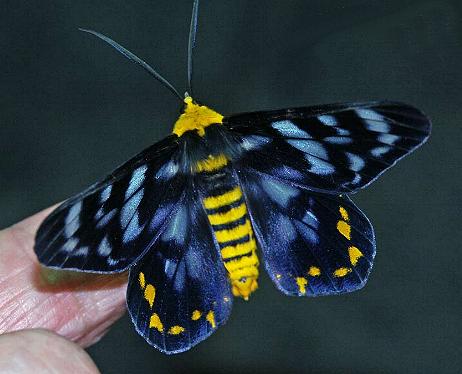
Further reading :
Ian F.B. Common,
Moths of Australia,
Melbourne University Press, 1990, pls. 11.2, 37.9, p. 372.
Pieter Cramer,
Uitlandsche kapellen voorkomende in de drie waereld-deelen,
Amsterdam Baalde,
Vol. 3 (1779), pp. 59-60, and also
Plate 227, fig. A,, and also
Plate 228, fig. A.
Peter Hendry,
Some notable Geometridae,
Butterflies and Other Invertebrates Club,
Metamorphosis Australia,
Issue 53 (June 2009), pp. 22-25.
Graham J. McDonald,
Moths of Tropical North Queensland,
Butterflies and Other Invertebrates Club,
Metamorphosis Australia,
Issue 75 (December 2014), pp. 7-12, Figures 4a & 4b.
Paul Zborowski and Ted Edwards,
A Guide to Australian Moths,
CSIRO Publishing, 2007, p. 137.
 caterpillar |  butterflies |  Lepidoptera |  moths |  caterpillar |
(updated 29 July 2013, 29 January 2025)